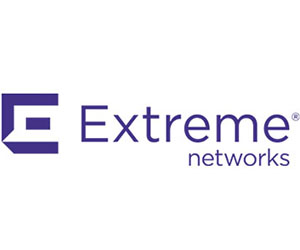With higher ed institutions increasingly moving to flexible learning, the cloud has become an essential service to facilitate HyFlex, a model that gives students the freedom to choose between in-person, synchronous and asynchronous online classes. In turn, cloud-enabled network management platforms have become necessary tools for keeping classroom experiences smooth, secure and scalable.
EdTech: Focus on Higher Education spoke with Dave Savage, vice president of sales at Extreme Networks, to discuss how ExtremeCloud IQ can help higher ed become flexible and agile in the years to come.
EXPLORE: See how Extreme Networks makes networking effortless for higher ed.
EDTECH: What have you noticed as learning has shifted toward HyFlex models?
SAVAGE: Users are fully distributed now. Professors have their syllabus and lectures online. They’re giving students the opportunity to attend in person or online. Then, from a personalized learning perspective, if they can't make it, there’s a central repository for recorded lectures so students can play them back. We’ve seen several professors lecture from their offices and broadcast them into large lecture halls, dormitories or wherever remote learning is happening.
EDTECH: With so many additional endpoints, how does ExtremeCloud IQ keep customers’ cloud data safe?
SAVAGE: First and foremost, ExtremeCloud IQ is hosted on all three major cloud platform providers — Amazon Web Services, Google and Azure — which all subscribe to industry best practices to secure their platforms, including ISO. Most vendors stop there, but Extreme decided to go the extra mile. As a company, we decided to achieve our own ISO certifications. Our customers know that we take every conceivable step to protect their data. We were the first major cloud vendor to obtain ISO 27001, 27701 and 27017 certifications, and we are currently working toward SOC 2 for process controls. The way I see it, we’ve got to provide untethered access to all students — whether they’re in dormitories, lecture halls, cafeterias or off-campus environments. Keeping data safe is what drives our cloud management solution. That extends to not only the wireless portion of it but also the entire wired infrastructure.
EDTECH: What impact do you think Wi-Fi 6E will have, especially when it comes to density in dorms?
SAVAGE: Simply put, Wi-Fi 6E is the biggest advancement in Wi-Fi in 20 years. Extreme’s new AP400 is delivering a third Wi-Fi 6E radio, in addition to 2.4 and 5GHz radios. This means that for the first time, we are delivering a brand-new 6GHZ superhighway that is more secure — and offers more capacity than ever before.
MORE ON EDTECH: How to know if your campus is ready for Wi-Fi 6.
EDTECH: How can fabric networking help with scaling?
SAVAGE: When you look at scaling, it’s not just about network capacity; it’s about the ability to scale the operations team to become more efficient in network configuration management. Fabric dramatically reduces the man hours it takes to accomplish moves, adds and changes. Historically, higher education has had a big route-switch environment.
In today’s age, it can be very expensive to maintain. You've got some very expensive employees or full-time equivalents who must be highly trained to program that and maintain it. With the introduction of fabric, we’re making it much more scalable and enabling plug and play. For example, one of my higher education institutions told me they can train a new engineer to do adds, moves and changes to the fabric environment in two hours. With past technology, this took months of training. Fabric brings ease of use, adds, moves, plug and play, and scalability. The biggest benefit is security: It cannot be hacked.
EDTECH: How can universities and colleges with limited budgets adopt ExtremeCloud IQ?
SAVAGE: From a funding perspective, what I've seen in the past six months is there’s still a lot of money from the CARES Act that is funneling to technology. That can fund cloud, new infrastructure upgrades and some Wi-Fi or fabric LAN switching technology. There’s also some American Rescue Plan Act funding that we’ve started to see. We’ve also seen some distance learning and career readiness grants that have been out there for a while that are helping with funds.
EDTECH: Is there anything Extreme is doing to help in that way?
SAVAGE: One of the things that we’ve instituted is a grant services program within Extreme. That’s something we started to implement about four months ago for our higher education community. We created the grant services program so that we can provide no-cost, professional grant and funding consultation to our customers. We can also help them find out where grants are, and what money is available through ARPA. A lot of times, small or mid-sized colleges don’t know where to look. There’s probably money available for them, they just don’t know how to get it.
EDTECH: Does the scalability of Extreme also means flexible prices for colleges with budgets in transition?
SAVAGE: Yes. A lot of colleges, especially lately, have been fluctuating. A lot of budgets have been cut in the past couple of years. As their enrollment goes up or down, we can adjust the cost based on that.
EDTECH: Do you think HyFlex models and the need for cloud solutions will subside once the pandemic is over?
SAVAGE: I think we’re going to see more of a need for cloud solutions. I think it is here to stay, even when the pandemic settles down, which is why we have been developing solutions to help higher education adapt to the unknowns of the future.
Brought to you by:














